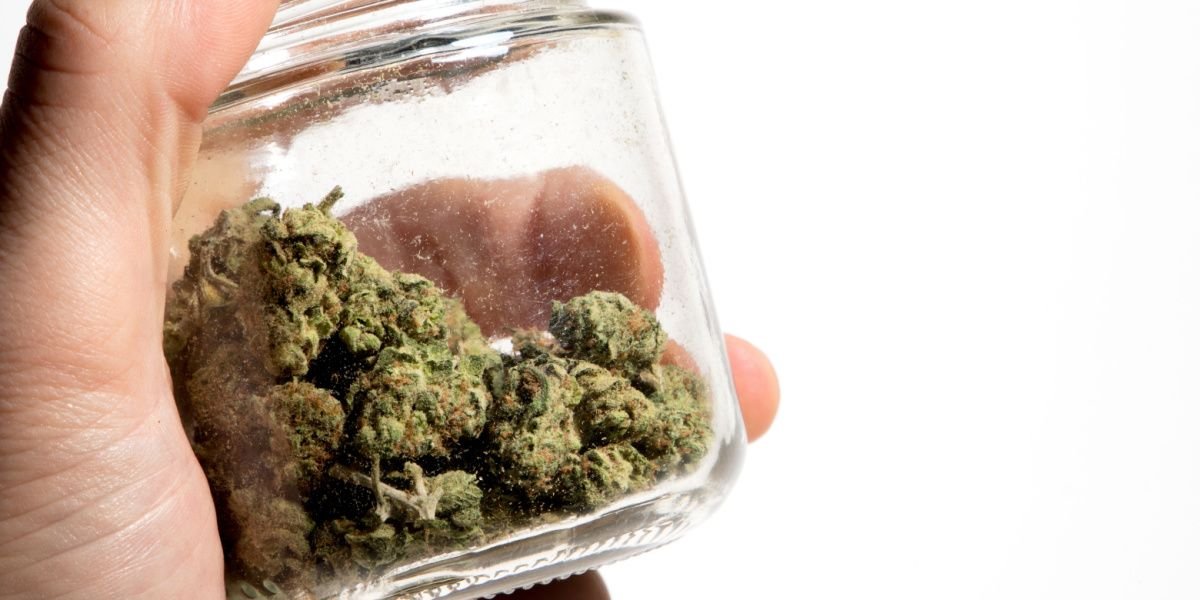Like all cannabinoids, THC is fat-soluble, meaning it can hang around in your body’s fat tissue for weeks, especially following frequent use, before it’s processed by the liver and excreted in the urine. Occasional users may clear THC within 3 to 5 days, while chronic users can retain it for 30 days or more. The duration of THC in your system is affected by factors such as frequency of use, body fat, metabolism, the potency of the cannabis, and liver function.
- THC is fat-soluble and can remain in the body for weeks, especially in regular users, making it detectable in drug tests long after use has stopped.
- Factors such as frequency of use, body fat, and liver function affect how long THC stays in your system, with occasional users clearing THC within days, while heavy users may retain it for over a month.
- Different drug tests (urine, blood, hair, and saliva) have varied detection windows for THC, with urine tests being the most common, especially in the case of law enforcement and workplace testing.
.jpg?v=1722513387)
What is THC?
THC is the main psychoactive compound in cannabis (marijuana), the force behind its characteristic “high,” featuring euphoria, relaxation, and contentment but also anxiety, paranoia, and hallucinations. It produces these effects by binding to cannabinoid receptors, mainly in the brain, that regulate mood, pain, sensation, and hunger.
THC also causes impairment, including difficulties with concentration and memory, lethargy, slower reaction times, and distorted perception of time.[1]
THC is distinct from CBD, another cannabinoid molecule that produces calmness without intoxication and can be legally sold as a cosmetic ingredient in the United States. Cannabis contains a mixture of THC and CBD, with the CBD thought to balance out the effects of THC and reduce anxiety and paranoia.[2]
In places where cannabis is legal, packages of leaves and edibles may indicate the ratio of THC to CBD. This is also true of delta-8 products that fall outside of legal regulations due to the combination ratios of THC and other ingredients. But it’s impossible to tell the composition of street cannabis and there’s recently been a trend for potent, high-THC cannabis, which may produce a more intense high but also comes with unpleasant side effects and risks, including confusion, anxiety, dizziness, rapid heart rate, paranoia, hallucinations, and nausea and vomiting.[3]
How long does THC stay in your system?
THC, like other cannabinoids, is fat-soluble so it can be stored in the body’s fat tissues and therefore sticks around for longer than water-soluble drugs such as cocaine and LSD.
For occasional users, the half-life of THC (the amount of time it takes for half to be excreted) is around 21.5 hours.[7] Because it takes five to six half-lives for a substance to be eliminated from the body, that means clearance can take up to four to five days.
For regular users, the half-life may be much longer, at 4.1 days, due to the storage of THC in fat tissue and its slow release from this storage.[8] That means it may be present in the body for more than 20 days.
Metabolites of THC may stick around even longer. One study found that the elimination half-life of the THC’s main metabolite, THC-COOH, was up to 12.6 days in chronic users.[8]
How long does THC take to kick in?
The amount of time it takes THC to take effect depends on how you consume it. Smoking or vaping cannabis delivers the quickest high: the THC travels through the lungs and directly enters the bloodstream, producing effects almost immediately and with blood concentrations peaking in 3 to 8 minutes.[4] This is also true of synthetic cannabis and cannabis extracts such as resin or shatter.
Food products containing cannabis, often gummies or brownies, take effect more slowly because the THC must be absorbed through the digestive system and processed by the liver before it reaches the bloodstream and causes psychoactive effects. You may start to feel the effects of edibles in 30 to 60 minutes, depending on the contents of your stomach. If you’ve eaten recently and your stomach is full, it may take up to two hours for you to feel the effects. When cannabis is ingested, THC levels don’t peak in the bloodstream for three hours.[5]
A relatively new way of consuming cannabis is through sublingual tinctures or tabs, which are dissolved under the tongue, absorbed through a mucus membrane, and directly enter the bloodstream. Less research has been done on this method of administration but reportedly effects become noticeable within 15 to 30 minutes.[6]
However, there are differences in the metabolism of cannabinoids between people, which can change how quickly THC takes effect, how long those effects last, and how soon the molecule and its metabolites are removed from the body.
How long do the effects of THC last?
When cannabis is smoked, the effects of the THC last approximately one to four hours. One study found that impairments caused by THC can last up to six hours after smoking.[1]
Edibles produce a longer-lasting and less intense high: up to six or eight hours.[6]
Factors that affect how long THC stays in your system
These half-lines are just averages and estimates. Each of us metabolizes THC slightly differently, depending on several factors.
- Regularity of use: The liver can only process so much THC in an hour. The backlog accumulates in fat tissues to be slowly released. Regular use leads to a large amount of THC in lipid storage, which can take weeks to be cleared, even if consumption has stopped.
- Dosage and potency of the cannabis: The more THC you take, the longer it takes to be eliminated.
- Body fat: The more body fat you have, the more THC can be stored.
- What you’ve eaten: When ingested, THC dissolves in fat to be absorbed by the intestines. If the THC comes in a high-fat food such as cookies or brownies, or if you take it alongside a high-fat meal, more will be absorbed, increasing your dose and the elimination time.[9]
- Medication and liver function: THC is metabolized in the liver by the same enzymes that break down most prescription medications. Only so many of these enzymes are available, slowing down slow the metabolism of both the THC and the medication. Impaired liver function will also mean your body metabolizes THC more slowly.
Does THC show up in drug tests?
Yes, THC, as a marker of cannabis use, is one of the main drugs searched for in drug testing. It will be found by virtually all drug tests administered by law enforcement, parole officers, employers, and healthcare providers.
Drug tests can identify THC and its metabolites in urine, blood, hair, and saliva, although the detection windows vary.
Urine tests
The amount of type these metabolites can be found in urine tests depends on the frequency of use:
- single use: 3 days
- moderate use (4 times/week): 5 to 7 days
- chronic use (daily): 10 to 15 days
- chronic heavy use (multiple times per day): more than 30 days[10]
Urine testing is the most common type of drug testing for cannabis use. Urine tests search for THC’s main metabolite, THC-COOH.
Blood tests
Blood tests are used less frequently but may be administered following traffic accidents and when a DWI is suspected. THC circulates in the bloodstream for a few hours after it’s been taken. Following one-time use, blood tests can usually only detect cannabis use for a single day.[11]
However, if you have significant fat stores of THC, such as following regular use, the compound will be slowly released back into the bloodstream to travel to the liver for metabolism. During these times, THC can be detected in the blood. This release can take up to weeks in chronic users of cannabis and may be somewhat irregular, depending on what else your body is metabolizing. Therefore, you might have a negative blood test several days after use but a blood test administered the next day could come back positive.
In one 2009 study, researchers monitored THC levels in the blood of 25 frequent cannabis users for seven days, during which time they were abstinent. 64% of subjects had at least one positive THC test during the timeframe, while six still had detectable THC levels after seven days. All subjects had detectable levels of the metabolite THC-COOH, which many blood tests look for.[12]
Hair follicle tests
Circulating THC metabolites are incorporated into hair strands as they grow. Within five to 10 days, that part of the strand reaches the scalp surface and can be detected by hair follicle testing.
In typical hair follicle testing, the top 1.5 inches of a strand of head hair is analyzed. Because head hair grows at a rate of 0.5 inches per month, the detection window is therefore around three months. If your hair grows more slowly, this detection window will be longer.
Body hair may also be used in hair follicle testing, particularly in people who don’t have head hair or have bleached, dyed, or permed it. Body hair grows at a similar rate when in a growing period. However, it’s more likely to be in a resting phase than head hair: at any given time 40 to 60% of body hairs are resting and not growing, compared to just 10 to 15% of head hairs. That means the part of the hair containing THC will remain in the segment used for drug testing for longer—for up to a year.[13]
Saliva tests
THC can be detected in the saliva of frequent users for up to 72 hours. The detection windows for one-time use are shorter, often less than 24 hours.[10]
In Alabama, saliva testing is performed on drivers suspected of driving under the influence of cannabis. Other jurisdictions are developing similar protocols.
Can you flush THC out of your system?
People anticipating drug tests may attempt to flush THC out of their system more quickly.
Cannabis detox remedies are outlined online and frequently involve drinking high volumes of water, then taking supplements such as vitamin B12 or creatinine to hide the dilution, which would normally be flagged by testing. However, drinking large volumes of water is dangerous and can lead to water intoxication and death. It’s also not reliable.
There is no effective and safe way of expediting your body’s removal of THC. The best thing you can do is stop using if you’re anticipating a drug test or be honest about your drug use if you’re struggling to quit.


-guide-detail.jpg?v=1722503135)
-and-gummies-guide-detail.jpg?v=1722503780)
